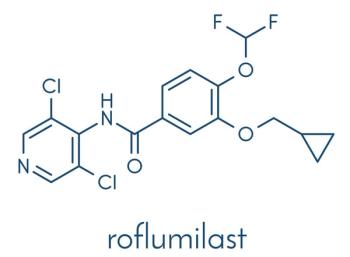
Can You Identify These Pathogenic Organisms That Creep, Float, or Fly?
Match each picture with the phrase below that best describes it. The organisms in these pictures might be microscopicor macroscopic, and they can be recovered from skin lesions or clothing by the patient and/or clinician.Answers and discussion appear on the following page
Match each picture with the phrase below that best describes it. The organisms in these pictures might be microscopicor macroscopic, and they can be recovered from skin lesions or clothing by the patient and/or clinician.Answers and discussion appear on the following page.
1.
Typically bites at night; "breakfast, lunch, and dinner" sign.
2.
Pustular lesions seen when this organism stings.
3.
Epidemic typhus associated with this organism.
4.
Urticarial lesions result from contact with this organ
Photo A depicts the larval or caterpillar stage of the CornEmperor moth, Automeris io. Note the characteristicbright green body and maroon and white side stripes.This caterpillar's domain extends from eastern Canada tothe Atlantic coast, and along with shoreline bordering theGulf of Mexico. The caterpillar resides on leafy trees and bushes and is mostabundant in the spring. This organism possesses hollow toxic hairs (setae)along the surface that inject a thermolabile-urticating protein into the skin ofhuman victims. Hives localized around the contact site are immediate butshort-lived, typically resolving in 2 to 8 hours. Systemic complaints rarely accompanythe urticarial lesions.
Photo B shows the common bedbug, Cimex lectularius.This rather large (5 mm long) brown parasite can be foundthroughout the world. Bedbugs hide in crevices duringthe day but emerge to take a blood meal during the night.A single insect generally produces several bites, often arrangedin a linear array along an arm or leg. This is called the "breakfast, lunch,and dinner" sign. Because the bite is generally painless, victims are unaware ofwhat has transpired until the morning, when they find bedclothes and/or bedlinens stained with blood and small crusted, purpuric, or urticarial papules presenton the skin. A professional exterminator best deals with bedbug infestation.
Photo C demonstrates the human body louse, Pediculushumanus var corporis. Note that these organisms do notlive on the skin, but rather infest the seams of the clothingwhere they complete their life cycle and lay their eggs.Suspicion of pediculosis should thus prompt examinationof the patient's clothing. Body louse infestation is sometimes referred to as"vagabond's disease" because it is associated with poor hygiene, often in homelessor displaced persons. Excoriations, erythematous papules, and pyodermaresult from incessant scratching or rubbing of the pruritic louse bites. Body licetransmit the rickettsial organisms that cause epidemic typhus and trench fever.
Photo D shows an imported fire ant. There are 2 suchspecies, Solenopsis richteri (which are black) and Solenopsisinvicta (which are reddish). These insects are foundprimarily in the southern and southeastern United States;they build large, conspicuous mounds up to 3 feet in diameter.They often attack in swarms. The ant first "bites" its victim and then rotates its body around the attached mouthparts, inserting a venomous stinger. The fire ant venom initially induces a papular lesion that becomes a sterile pustule in about 24 hours. Pustules are associated with a painful burning or stingingsensation.
Newsletter
Enhance your clinical practice with the Patient Care newsletter, offering the latest evidence-based guidelines, diagnostic insights, and treatment strategies for primary care physicians.
























































































































































































































































































